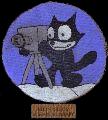CT Grognard
Posts: 694
Joined: 5/16/2010
From: Cape Town, South Africa
Status: offline

|
It is my desire to, once I have sufficient time available again, engage in a Scenario 28C (DaBigBabes "C", the one with the reduced cargo capacities) as the Japanese player, with PDU off.
I would like for it to be made as historical as possible by use of lots of house rules. I really enjoyed the Historical War Project that Fletcher and cantona2 were busy with last year. A lot of the house rules I've been working on are based on those that Fletcher used.
So, here's an idea of the house rules I'm toying with for a Da Big Babes Scenario 28C as the Japanese player:
GENERAL
- IJA and IJN ground units may not invade an enemy-held base at the same time
- IJAAF units must operate with IJAAF aviation support and IJNAF must operate with IJNAF aviation support
- The only IJAAF plane that may be used in an ASW role is the Ki-51 (to reflect historical use)
- Kido Butai will make a single port attack on Pearl Harbor, and will return directly to Japan; if the first assault on Wake by Japan fails, the Japanese player may divert KB to support a second assault
- Americans cannot react to the landings at Tarawa, Wake and Makin; once the first landings take place the Americans are relieved from this rule (if no landings occur, by 14 December 1941)
- Manila and Singapore may have fighters up and on CAP on the 1st turn, but the Allied player cannot transfer squadrons on the first turn
- The Allied player may give alternate orders to Force Z on the 1st turn. All other Allied TFs may not have their destinations/mission amended; no new Allied TFs may be created on the 1st turn
- Japanese submarines can only be equipped with the E14Y1 Glen
- No partial parachute deployments (i.e. one unit, one target)
- No submarine invasions (with one exception, Marine Raiders on SST submarines)
- All PT boats in a hex must be in the same TF
- 4E bombers cannot operate on Naval Attack below 10,000 ft
- 4E bombers (excluding B-29s) can operate on Ground Attack in hexes that do not have Allied units in them (i.e. cannot be used as close air support). B-29s cannot be used on Ground Attack at all.
- No strategic bombing (oil, resources, HI, LI, manpower) until July 1943
- No night bombing allowed if moonlight is less than 50% (except for B-29s equipped with ground mapping radar)
- The minimum altitude for night bombing is 3000 feet
- Fighters may only fly sweeps or CAP in either their best or second best maneuver altitude bands
- Japanese surface ships cannot transit the Malacca Strait until Singapore has fallen
- The atomic bomb may not be used on Tokyo
- Commonwealth land and air units may only operate to liberate Commonwealth possessions as well as the Dutch East Indies (e.g. Australian units are limited to Australia, New Zealand, New Guinea, India, Burma, Malaya, Borneo, and the Dutch East Indies)
MONSOON RULE
- From 15 May to 15 October each year (Monsoon Season) offensive operations in the jungle and mountain hexes on the Burmese front (everything above “Thailand” label within Burma and Thailand borders plus the few jungle hexes going 3 or 4 hexes into “India” – Kohima, Ledo, Imphal area) is highly restricted:
- No shock or deliberate attacks in jungle hexes within the area;
- Deliberate attacks allowed in non-jungle hexes;
- Bombardment attacks allowed everywhere;
- Movement into friendly/empty hexes allowed
- The percentage of aircraft allowed to fly from an airfield in this region during this time is a factor of its size*10% (so an air unit flying from a level 2 airfield can only fly 20% of its aircraft, and must set Rest to 80%)
- No carrier aircraft strikes on Burma from the Gulf of Bengal during this time (however, carrier aircraft can still strike Bengal, Northern India or Malaya from carriers in the Gulf of Bengal)
CHINESE THEATRE:
- No industry bombing in Chinese bases by either side (reflecting dispersed artisanal light industry), but bombing “manpower” is allowed.
- A maximum of 4 squadrons of US four-engine bombers may operate from Chinese bases, but only from level 6 airfields or higher, and the aviation support must be provided by an American unit.
- Chinese forces (and air units) cannot go outside its borders except those assigned to the Chinese Expeditionary Force in Burma/Northern Combat Area Command
- The NCAC shall be limited to four Chinese Corps (12 Chinese Divisions) and one Chinese squadron (to reflect historical deployment of 17th Pursuit Squadron (I-153s)) and may only enter Burma once Rangoon has fallen to the Japanese
- The AVG may operate in Burma and China only
KWANTUNG ARMY
- Units must pay PPs to cross the Kwantung border
- The Japanese player may buy out artillery units to a maximum of 1 artillery regiment for every 3 infantry regiments who have already paid the PPs to exit (i.e. no stripping of artillery units only)
- No Kwantung HQs may be bought out until 1944 or the invasion of the Marianas, the liberation of Rangoon or the occupation of a base in the DEI with a level 4 airfield or higher
- No air units may be moved out of Kwantung until June 1942; from then one daitai may be moved per month but subject always to a minimum of 4 fighter daitai and 8 bomber daitai. This does not prevent air operations from Kwangtung to China.
- If the Japanese player decides to invade the Soviet Union, he must invade Soviet territory in an unoccupied hex to activate and may then only begin offensive operations a week later (to reflect the excellent intelligence assets the Soviets had in the Japanese government which would preclude strategic surprise).
- Once the Soviets are activated, no Japanese unit in Kwantung may get an HQ reassignment, except isolated units can be evacuated by sea.
DUTCH EAST INDIES
- Dutch air units cannot be disbanded nor can they be withdrawn.
- Dutch surface vessels may operate in Indian Ocean waters or between Australia and New Guinea, but not the Pacific.
- Dutch submarines can only operate between the South China Sea and northern Australia (i.e. off Malaya, Sumatra, Java, Borneo, Celebes and Timor)
- Garrison requirements must be observed by the Allied player
- No strategic bombing in the DEI until 1944
- IJA units need a minimum of 25 planning points to amphibiously land at/parachute into an enemy-held DEI base (not needed for IJN units)
PHILIPPINES
- All US units in the Philippines must have replacements OFF
- Allied air units in the Philippines may not receive replacement aircraft other than by disbanding other Philippine-based air units into those units
- Philippine-based air units may not be disbanded or withdrawn in a manner that would result in the transfer of aircraft or the pilots back into the aircraft or pilot pools; if the unit is withdrawn, the Allied pilot must answer “NO” to the reform unit in x days question
- Manila is an open city; as such the Allied player may not build additional fortifications and must retreat from the city once the Japanese reaches the city; the Japanese player can only take Manila as part of a general advance (of at least two divisions strength) from the north, south or east of Luzon. Once Japan has conquered all of Luzon, Manila is no longer an open city
- There is no restriction on the Allied player using surface or air transport at any time to move supplies or troops in or out of the Philippines
- Submarine transport missions by the Allied player may only be used to resupply and evacuate cut-off or isolated Allied units, or Bataan (once the Allied players have retreated there)
AUSTRALIA
- The Japanese player may only invade Australia once Timor, Ambon, Kendari, Mindanao, Batavia and Soerabaja are in Japanese hands and once he has saved a reserve of 3000 political points. These political points should be kept in reserve until (1) the capture of all ports in northern Australia (Port Hedland; Broome; Derby; Wyndham; Darwin) or (2) the capture of Perth, or Sydney, or Brisbane
- IJA units invading Australia need a minimum of 80 preparation points (not needed for IJN units)
- If Australia is invaded, the Allied player may not spend PPs on anything except sending forces to Australia by any means or medium, whether land or air force (with the exception of reassigning leaders)
- Australian CMF units may only operate in Australia and Papua New Guinea
INDIA AND CEYLON
- No Restricted Allied unit in India may change its command area until 1 January 1943. PPs need to be paid in order for units to leave India (this is to reflect the large number of British troops required in India to suppress the “Quit India” movement as well as the Indian National Army guerrilla activities).
- If Japanese forces cross the border into India, British and Commonwealth units may only spend political points to send reinforcement units to India
- The Japanese player will need a reserve of 4000 political points in order to invade India; this must be maintained until the capture of Calcutta, Bombay, Colombo or Trincomalee
- Any IJA units invading India or Ceylon must have at least 80 preparation points
THAILAND
- Thai ground forces may carry out garrison duties at bases in Burma within 3 hexes of the Thai border
- US ground forces may not enter Thailand, but US air forces are able to bomb Thailand (the USA never declared war on Thailand)
ROYAL NAVY
- Until September 1942 no RN capital ships (CV, CVL, BB or BC) may operate in the Pacific (except for repairs, transit to ports in the US and return from them)
- From 1 January 1943 a single capital ship may operate in the Pacific (as was the case with HMS Victorious in the Solomons campaign)
- From 1 January 1945 the Royal Navy may operate freely in the Pacific (once assigned to the Pacific Fleet under US command)
|
 Printable Version
Printable Version











 ).
).


 It's the details. And options. And those are NEVER in the history books. Besides, I want to try and be Smarter than Chester Nimitz or Isoruku Yamamoto! And that is a VERY tough thing to do!
It's the details. And options. And those are NEVER in the history books. Besides, I want to try and be Smarter than Chester Nimitz or Isoruku Yamamoto! And that is a VERY tough thing to do!





 New Messages
New Messages No New Messages
No New Messages Hot Topic w/ New Messages
Hot Topic w/ New Messages Hot Topic w/o New Messages
Hot Topic w/o New Messages Locked w/ New Messages
Locked w/ New Messages Locked w/o New Messages
Locked w/o New Messages Post New Thread
Post New Thread